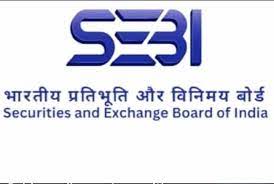![]()

What is the Process of Trading in Stock Options (Futures) Through a Demat Account Holder in India?
Stock options and futures are popular financial instruments used by traders and investors in India to hedge risks, speculate on market movements, or enhance portfolio returns. If you are a Demat account holder in India and are interested in trading stock options or futures, understanding the process is essential. Here’s a step-by-step guide to help you navigate this financial terrain.
What are Stock Options and Futures?
Before diving into the process, let’s quickly define stock options and futures:
- Stock Options: These are derivative contracts that give the holder the right, but not the obligation, to buy or sell an underlying asset (such as a stock) at a predetermined price before a specified expiry date.
- Futures: These are standardized contracts to buy or sell an asset (like a stock index or commodity) at a predetermined price on a future date. Unlike options, futures obligate both parties to complete the transaction.
Now that you know the basics, letŌĆÖs move on to the actual trading process through a Demat account.
Step-by-Step Guide to Trading Stock Options and Futures
1. Open a Trading and Demat Account
To trade stock options or futures, you must first have a Demat account along with a trading account with a registered stockbroker. While the Demat account holds your securities in electronic form, the trading account is used to place buy or sell orders in the market.
- How to open a Demat and trading account? Visit any registered stockbroker (like Zerodha, ICICI Direct, or Upstox) and complete the KYC (Know Your Customer) process by providing your PAN card, address proof, and identity documents. You can open these accounts online through the broker’s website or mobile app.
2. Activate Derivatives Trading (F&O)
Once you have a trading and Demat account, you need to specifically enable Futures and Options (F&O) trading. Most brokers do not activate this feature by default, so youŌĆÖll need to request it.
- How to activate F&O trading? Provide your income proof (such as your salary slips or bank statements), as SEBI mandates verification of financial status before allowing derivatives trading. Submit the documents to your broker, and they will activate F&O for your account.
3. Understand Margin Requirements
Futures and options trading involves margin money. A margin is a certain percentage of the contract value that you need to maintain in your account to cover potential losses.
- What are the margin requirements? Margin requirements vary based on the broker and the type of contract. Futures generally require a higher margin compared to options. For instance, for stock futures, the margin could range from 10-15% of the contract value.
4. Research and Choose the Stock Options/Futures
Before you start placing trades, it is crucial to conduct thorough research. Review market trends, study technical indicators, and check the option chain or futures contract details for stocks you’re interested in.
- How to choose the right contract? For options, you’ll need to choose between a call option (buy) or a put option (sell), depending on whether you expect the stock price to rise or fall. For futures, youŌĆÖll choose based on the delivery month and price expectations.
5. Place an Order on Your BrokerŌĆÖs Platform
Once your account is set up and you have chosen your stock option or futures contract, you can place an order through your brokerŌĆÖs trading platform (either web-based, mobile app, or trading terminal).
- How to place an options or futures order? Log in to your trading platform, navigate to the F&O section, select the stock and expiry month, and specify the quantity (lot size). Choose whether you want to buy or sell and whether itŌĆÖs a market or limit order.
6. Monitor Your Positions
Once you have placed the trade, it’s essential to monitor your open positions. F&O prices can fluctuate rapidly, so keep an eye on the market and your account balance.
- How to manage positions? You can exit or square off your positions at any time before the expiry of the contract. For options, you can let the contract expire if you believe the strike price will not be hit, or you can sell the option in the market.
7. Expiry and Settlement
Futures and options contracts have an expiry date, which is typically the last Thursday of every month for Indian stock markets.
- What happens at expiry? On the expiry date, the contract will be settled automatically. For futures, it will be marked to the market and settled in cash. For options, if your contract expires in-the-money (ITM), you will receive or pay the difference based on the strike price and spot price.
8. Pay Brokerage and Other Charges
Each trade in stock options and futures involves brokerage fees, transaction charges, GST, stamp duty, and SEBI charges. Ensure you’re aware of these costs as they can impact your net profit.
- How much are the fees? Brokerage rates for F&O trading vary, but they are generally lower than for equity trades. For example, some brokers may charge a flat fee (like Ōé╣20 per order), while others may charge a percentage of the trade value.
Key Points to Remember
- Risk Management: Derivatives trading is highly leveraged, meaning that both profits and losses can be significant. Always trade with caution and consider using stop-loss orders to limit your losses.
- Regulatory Compliance: Ensure you follow the guidelines set by the Securities and Exchange Board of India (SEBI), as the regulator monitors and enforces rules for F&O trading.
- Continuous Learning: Options and futures can be complex, so consider learning about them through online courses, financial webinars, or consulting with financial advisors before starting.
To visit:https://www.sebi.gov.in/
FAQs
1.What is stock options (futures) trading?
Answer: Stock options and futures trading involve buying and selling contracts that give you the right (options) or obligation (futures) to buy/sell stocks at a predetermined price on a specific future date.
2. Can I trade stock options and futures with a Demat account?
Answer: Yes, but you also need to have a trading account along with your Demat account. The Demat holds securities, while the trading account is used for buying and selling.
3. How do I open a trading account for options and futures?
Answer: Contact your bank or broker where you have your Demat account, and they will guide you through opening a trading account. Submit necessary documents like ID proof, address proof, and bank details.
4. Is margin money required for trading in options and futures?
Answer: Yes, to trade in futures and options, brokers require you to deposit margin money, which is a percentage of the total contract value as a safety net against losses.
5. What is the minimum capital needed to trade options or futures?
Answer: The minimum capital depends on the contract size and the brokerŌĆÖs margin requirements. Typically, you need around Ōé╣10,000 to Ōé╣50,000 to start trading.
6. How do I place an order for options or futures?
Answer: Log into your trading platform, choose the stock options/futures you want, and place a buy or sell order. You can specify the type of order (limit/market) and quantity.
7. What is the difference between ŌĆścallŌĆÖ and ŌĆśputŌĆÖ options?
Answer: A call option gives you the right to buy a stock, while a put option gives you the right to sell. You can profit from the stock’s price movement without owning the stock.
8. How do I track the performance of my trades?
Answer: Use your brokerŌĆÖs trading platform or mobile app to monitor real-time prices, and review your open positions, profit/loss, and margin status.
9. When should I close my options or futures position?
Answer: You can close a position any time before the expiry date to book profits or limit losses. Futures and options have a fixed expiry date (last Thursday of the contract month).
10. What are the risks in trading options and futures?
Answer: The risk includes potential loss of margin money if the stock moves against your position. Futures carry unlimited risk, while options carry the risk of losing the premium paid.
Contact:┬Ā┬Ā┬Ā┬Ā 8130555124, 8130045124
Whatsapp:┬Ā┬Āhttps://wa.me/918130555124
Mail ID:┬Ā┬Ā┬Ā┬Ā┬Ā┬Āoperations@vibrantfinserv.com
Web Link:┬Ā┬Ā┬Āhttps://vibrantfinserv.com
FB Link:┬Ā┬Ā┬Ā┬Ā┬Ā┬Āhttps://fb.me/vibrantfinserv
Insta Link:┬Ā┬Āhttps://www.instagram.com/vibrantfinserv2/
Twitter:┬Ā┬Ā┬Ā┬Ā┬Ā┬Āhttps://twitter.com/VibrantFinserv
Linkedin:┬Ā┬Ā ┬Āhttps://www.linkedin.com/in/vibrant-finserv-62566a259/

For further details visit:┬Āhttps://vibrantfinserv.com/service-detail-25.php